MAP 4th Grade Practice Test & Expert Prep - Boost Your Scores in Math, Reading & Language
Every hour of practice brings your child closer to success.

Hey there! Do you have a question about the test or our practice package? Email me at roman@staggingapps.website. I'm here to help your child succeed!
Free MAP 4th Grade Practice Test (Math, Reading, Language, and Science)
Try the following sample questions (taken from our complete practice package) with your child to help them get familiar with some of the question types on the test.
The MAP 4th grade exam includes between three to four sections, each includes between 40 to 53 questions. These subtests are Math, Reading, Language Usage (or Language Arts/ELA), and for some schools – Science.
(we’ll dive into each one in detail further down the page).
The MAP Test is untimed and adaptive, which means it adapts its difficulty level to your child’s responses.
If your child answers a question correctly, the next one will be more challenging. If they answer incorrectly, the next one will be easier.
The general division for this difficulty level is below grade level, at grade level, and above grade level.
The practice questions below are divided similarly, to give you a feel for these levels.
NWEA MAP 4th Grade Math Practice Questions
Below-Grade-Level Sample Question
If your child answers a few questions incorrectly, the next question they will receive will be below grade level. Here’s an example of such a question:
Below are the first three figures, made out of squares, in a pattern. How many squares will there be in the seventh step of the pattern?
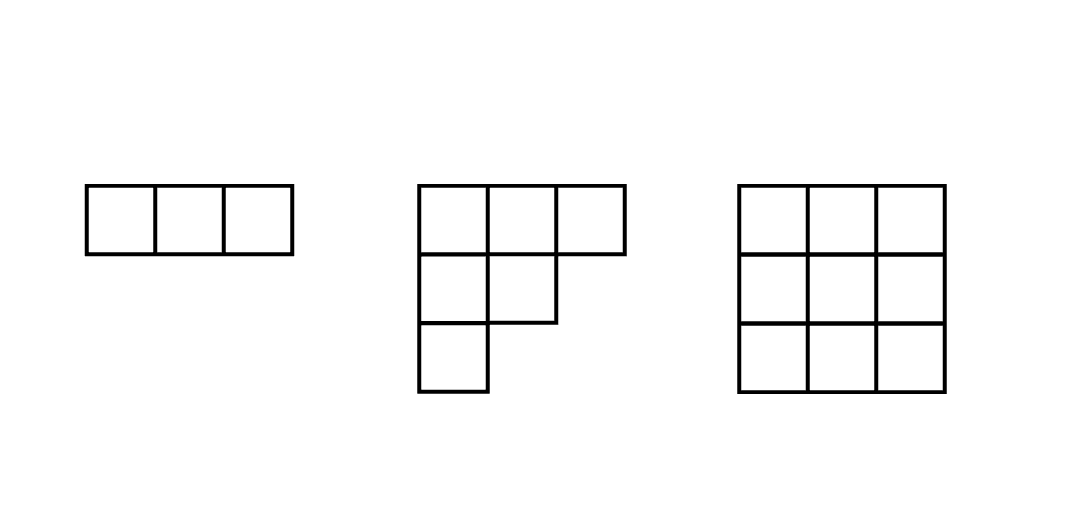
A) 12
B) 15
C) 21
D) 18
Show Answer
Solution:
Look at the sequence of the figures:
Step 1: The figure has 3 squares.
Step 2: The figure has 6 squares.
Step 3: The figure has 9 squares.
This sequence increases by 3 with each step. For the seventh step, the number of squares =7×3=21
To make it simpler, we can form a number series with this pattern:
3, 6, 9, 12, 15, 18, 21
Hence, the correct answer is option C.
At-Grade-Level Sample Question
If your child answers a below-grade-level question correctly, the next question will be slightly harder – at grade level. Here’s an example:
Below is a price list:
Item | Price |
Notebook | $3 |
Eraser | $0.75 |
Pen | $1.50 |
Highlighter | $2 |
Binder | $3.25 |
Marker | $3.5 |
Michael bought one notebook, two pens, one highlighter, and one marker. How much did Michael pay for his purchase?
A) $10.5
B) $11.5
C) $12.5
D) $11
E) $12
Welcome to your go-to practice resource for the 2025 NWEA MAP 4th Grade Test!
To boost your child’s scores, help them excel academically, and secure their spots in desired programs, we have designed an effective preparation process that has helped countless students succeed:
- Start with a Free Practice Test: Take our free MAP 4th Grade practice test below to get a feel for the exam and identify weaker areas.
- Ready for More? Unlock the complete practice package with 21 practice tests and 430 questions designed to enhance your child’s performance.
Let’s work together to ensure your child excels on the test!
Show Answer
Amount Michael paid for his purchase:
Notebook = $3
Pens= 2×1.50=$3
Highlighter = $2
Textbook = $3.5
Total: 3+3+2+3.5 = $11.5
Hence, the correct answer is option B.
Above-Grade-Level Sample Question
These questions are more challenging for children in Grade 4 and are taken from the pool of questions for 5th grade.
Here’s an example:
What will happen to the perimeter if all the side lengths are quadrupled?

A) The perimeter will be doubled.
B) The perimeter will be tripled.
C) The perimeter will be multiplied by sixteen.
D) The perimeter will be multiplied by eight.
E) The perimeter will be multiplied by four.
Show Answer
The original perimeter of the rectangle is,
P=2×(7+5)=24 inches.
When all sides are quadrupled, the new dimensions are:
7×4=28inches, and 5×4=20inches.
The new perimeter is,
Pn=2×(28+20)=96 inches
Since 96=4×24 , the perimeter is multiplied by four.
Hence, the correct answer is option E.
Does your child find math challenging? Don’t worry—many kids experience the same at this stage.
Encourage your child with small daily practices—they’ll build confidence as they improve.
Every bit of practice counts, and with time, your child will build strong math skills.
Looking for ways to support your child’s math skills? Get our practice package with over 140 Math practice questions designed just for them.
Boost Your Child's MAP Test Scores
Help your child prepare with a complete practice package designed to maximize their performance on the MAP 4th Grade test.
Build Confidence with Realistic Practice Tests
Master All Test Areas with 18 Quizzes in Varying Levels
Gain an Edge with Expert-Created Resources
NWEA MAP 4th Grade Reading Practice Questions
Below-Grade-Level Sample Question
Read the passage:
John spent weeks preparing for his school’s baking competition. He practiced making cakes every evening, trying out new recipes and asking his family for feedback. On the day of the competition, John presented a beautiful chocolate cake with colorful decorations. The judge smiled and said, “You have a great talent for baking! This cake looks fantastic!” However, when the results were announced, John did not win. He forced a smile but quietly thought, “I hoped I would win after all the effort I put in.”
What word best describes how John feels at the end of the passage?
A. Proud
B. Tired
C. Excited
D. Disappointed
Show Answer
At the end of the story, John hoped to win but didn’t, even though the judge liked his cake. This made him feel disappointed because he worked hard but didn’t get the prize he wanted.
• A is wrong because John’s family and the judge were proud of him, but John wasn’t feeling proud at that moment.
• B is wrong because there’s no mention of John being tired in the story.
• C is wrong because John wasn’t excited; he was feeling sad about not winning.
At-Grade-Level Sample Question
Read the passage:
Animals often live in groups, and different animals have special names for these groups. For example, a group of lions is called a “pride,” and a group of wolves is known as a “pack.” The names for animal groups help describe how these animals live and work together in nature. Some animal groups, like those of elephants, are called herds, while others, like birds, are called flocks.
Which of the following words best matches the meaning of “pride” as it is used for lions?
A. Pack
B. Leader
C. Tribe
D. Group
Show Answer
The correct answer is D – “Group” because “pride” is just another word for a group of lions.
• A is incorrect because “pack” refers to wolves, not lions.
• B is incorrect because “leader” refers to one lion, not a group of them.
• C is incorrect because “tribe” usually refers to human groups, not animals.
The word “group” fits best because it simply means a collection of lions, just like “pride” does.
Above-Grade-Level Sample Question
Read the passage:
Quartz is one of the most abundant minerals found on Earth. The name “quartz” comes from the German word “quarz,” which refers to its crystalline structure. Quartz forms under various conditions and can be found in igneous, metamorphic, and sedimentary rocks. It is used not only for decorative purposes but also in industries due to its unique properties. Quartz is prized for its ability to vibrate at a precise frequency when subjected to an electric charge, making it essential in the manufacturing of clocks, watches, and other electronic devices. Synthetic quartz can also be produced in laboratories for specialized applications.
Why is quartz widely used in electronic devices?
A. It is abundant and easy to extract.
B. It can be artificially produced in labs.
C. It vibrates consistently when electrically charged.
D. It is commonly found in many types of rocks.
Show Answer
The correct choice is (C).
The passage explains that quartz is valued in electronics for its ability to vibrate at precise frequencies when exposed to an electric charge, which is crucial for devices like watches and clocks.
Option (A) is incorrect because, although quartz is abundant, this is not why it is used in electronics.
Option (B) is irrelevant, as the passage does not suggest synthetic quartz is the main reason for its use in electronics.
Option (D) is misleading, as the geological occurrence of quartz does not explain its importance in electronic applications.
NWEA MAP 4th Grade Language Usage Practice Questions
Below-Grade-Level Sample Question
Read the paragraph.
Students born between 1981 and 1996 are considered part of the Millennial generation. They are known for growing up during the rise of the internet and social media. Millennials are often described as tech-savvy and prefer digital communication over traditional methods. They also value experiences, such as travel and social events, more than material possessions.
Which of the following is not a supporting detail in this paragraph?
A) Millennials are known for growing up during the rise of the internet and social media.
B) Millennials value experiences, such as travel and social events, more than material possessions.
C) Millennials prefer digital communication over traditional methods.
D) Millennials have a strong interest in video game competitions and esports.
Show Answer
The correct answer is D.
The paragraph focuses on general characteristics of Millennials, including their experience with the internet, social media, and their preference for experiences and digital communication.
● Option A: This is a supporting detail as it highlights their connection to the internet and social media.
● Option B: This is a supporting detail as it describes their preference for experiences over material possessions.
● Option C: This is a supporting detail as it mentions their communication preferences.
● Option D: This is not mentioned in the paragraph and is not a supporting detail.
At-Grade-Level Sample Question
If you were asked to write instructions for assembling a piece of furniture, the best point of view to use would be:
A) Second person
B) Third person
C) First person
D) Third person omniscient
Show Answer
The correct answer is A.
The second person point of view is used for giving directions or instructions because it directly addresses the reader using pronouns like “you” and “your.”
For example, “You should attach the legs to the base using the screws provided.” This makes second person the most suitable for instruction writing.
● Option B is incorrect because the third person point of view uses pronouns like “he,” “she,” or “it,” which do not directly guide the reader.
● Option C is incorrect because the first person point of view (using “I” or “we”) would not be appropriate for instructions since it focuses on the writer’s perspective rather than the reader’s actions.
● Option D is incorrect because the third person omniscient point of view involves the storyteller knowing everything about all characters and is irrelevant for instructional writing.
Above-Grade-Level Sample Question
You are writing a short paragraph about the benefits of outdoor exercise.
One time I went hiking in the mountains because I wanted to challenge myself. The view at the top was amazing, but I also felt a sense of peace and calm during the hike. Nature has a way of clearing your mind and improving your mood. I used to dislike physical activities, but now I try to include outdoor exercise in my weekly routine to stay fit and reduce stress.
Which is the best way for you to revise your draft?
A. Focus on the main idea. Remove the sentence about disliking physical activities in the past.
B. Add more details about the view at the top of the mountain.
C. Change the tone of the paragraph to make it sound more scientific and formal.
D. Add a sentence at the end that emphasizes how nature helps reduce stress.
Show Answer
The correct answer is D.
To improve the paragraph, you can add a sentence at the end that ties together the main idea of the benefits of outdoor exercise with an emphasis on how it helps reduce stress. This enhances the focus on the central topic.
Option A removes a detail that connects to the writer’s transformation, which is relevant.
Option B shifts the focus away from the main idea.
Option C changes the tone unnecessarily, detracting from the personal perspective.
Give Your Child the Tools to Excel & Score High
Get the complete practice package and access 430 Practice Questions & Explanations in Math, Reading, and Language Usage.
Only $49
NWEA MAP 4th Grade Science Practice Questions
Below-Grade-Level Sample Question
A group of squirrels live in a forest near a park. A child often sees the squirrels running around and gathering food in the fall but rarely sees them in the winter.

Why does the child rarely see the squirrels in the winter?
A. The squirrels’ fur changes color to blend with the snow in the winter.
B. The squirrels stay in their nests to conserve energy during the winter.
C. The squirrels only come out to find food late at night in the winter.
D. The squirrels move to warmer places during the winter months.
Show Answer
Correct Answer: B.
Squirrels work hard in the fall to gather food, such as nuts and seeds, so they have enough to eat during the cold winter.
In the winter, it’s too cold and there isn’t much food to find outside. That’s why squirrels stay cozy in their nests and use less energy. This helps them survive until it gets warmer in the spring.
While they don’t hibernate like some animals, they still stay inside most of the time, which is why the child doesn’t see them often in the winter.
At-Grade-Level Sample Question
Strong winds from a nearby hill blow dirt into a farmer’s field. The farmer decides to plant a row of trees along the edge of the field to protect the crops from the wind and dirt.
What type of trees would best protect the field?
A. Trees with wide leaves that provide shade.
B. Trees with thin trunks and small leaves.
C. Trees with thick branches that grow close to the ground.
D. Trees with tall trunks and branches high above the ground.
Show Answer
The correct answer is C.
The farmer needs trees that can block the wind and stop the dirt from blowing into the field.
Trees with thick branches near the ground are the best choice because they create a barrier that blocks the wind and traps the dirt.
Trees with high branches or thin trunks wouldn’t work as well because the wind and dirt can pass underneath them.
Above-Grade-Level Sample Question
A community group wants to make their local park more environmentally friendly and protect nearby wildlife.
Which plan would best help the environment?
A. Add benches and paths to make it easier for visitors to walk around the park.
B. Plant trees and flowers that are native to the area to provide shelter and food for wildlife.
C. Remove fallen leaves and logs to make the park look cleaner for visitors.
D. Install bright lights to keep the park well-lit at night for safety.
Show Answer
Correct Answer: B.
Planting native trees and flowers helps the environment because these plants are well-suited for the local soil and weather. They also provide food and shelter for animals like birds, insects, and other wildlife.
Removing fallen leaves or adding bright lights might actually harm the ecosystem by disturbing animals or taking away their natural habitats.
Maximize Your Child’s Scores with the Complete MAP Practice Package
The 4th Grade MAP Practice Package covers the topics seen on the actual test and will help improve your child’s skills and knowledge and maximize their score potential.
Here’s what’s included:
- 3 full-length practice tests and 18 quizzes: With 430 Math, Reading, and Language Usage questions, your child will practice in a format that mirrors the real MAP test.
- Practice at the right level: The quizzes are designed with varying difficulty levels to match your child’s current skills while gently challenging them and encouraging growth.
- Detailed explanations for every question: Mistakes become stepping stones. Each question includes a clear, child-friendly explanation to strengthen understanding.
- Score reports to track progress: Get a clear picture of where your child is excelling and what areas need extra attention.
- Created by teachers and experts: This package was developed with math and English Language Arts educators to ensure accuracy and quality, aligning with the MAP test topics and Common Core State Standards.
With regular practice, your child will approach test day feeling calm and ready to show what they’ve learned.
And because we want you to feel confident in your choice, we back this package with our 100% Satisfaction Guarantee.
Start today and give your child the tools they need to thrive and succeed!
See What's Included:
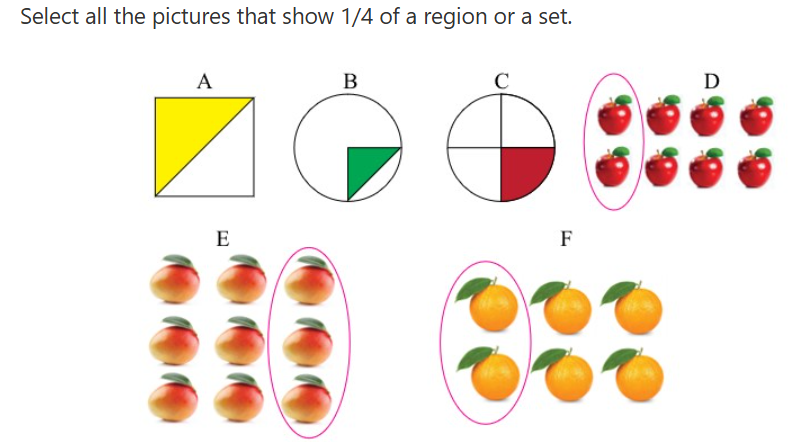
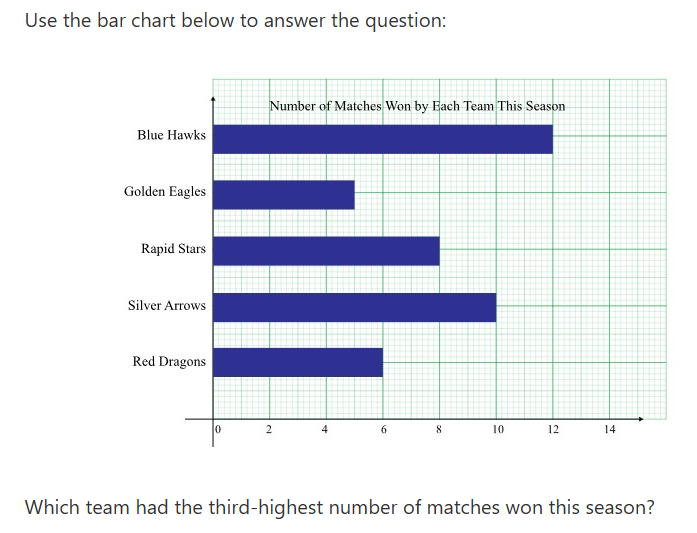
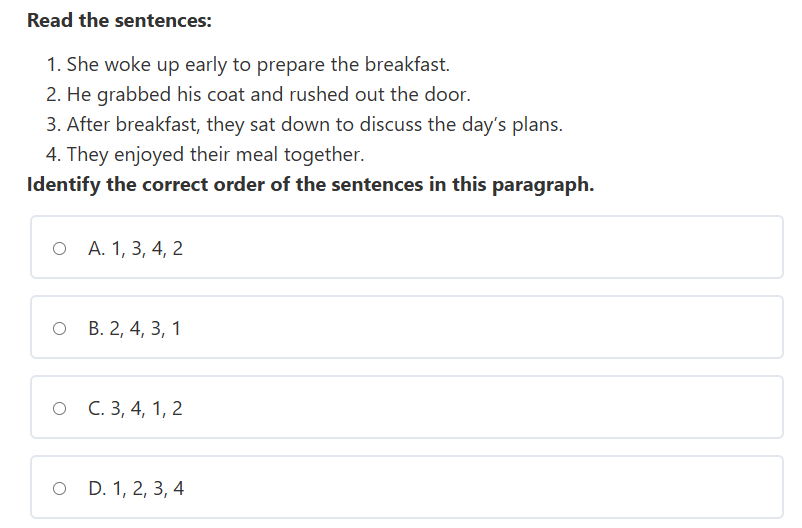
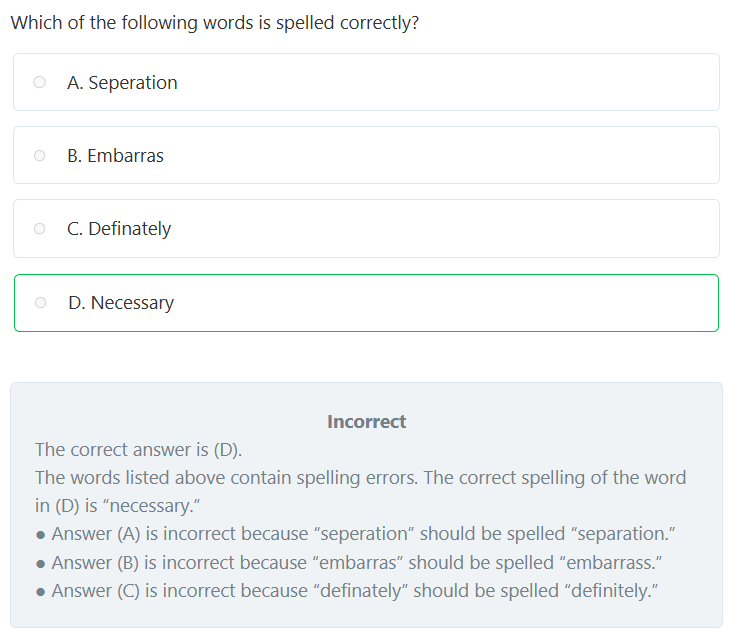


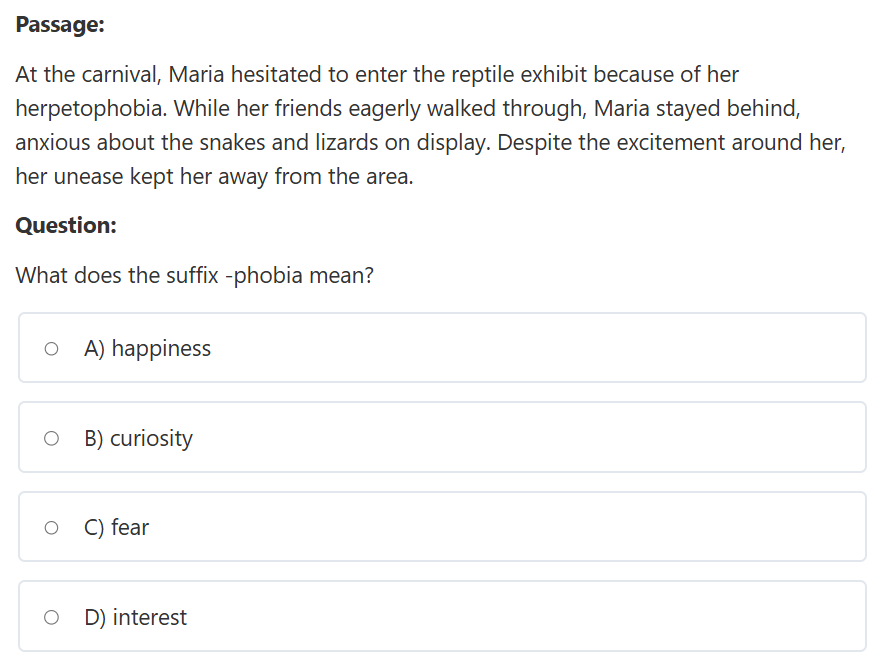
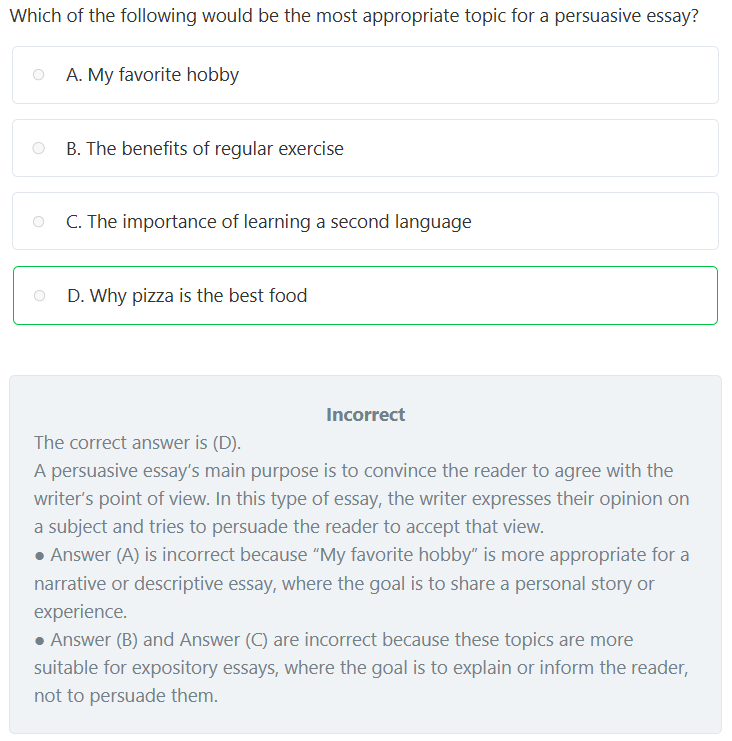
Course Content
One-time Payment & 6-Month Unlimited Access
Overview of the MAP 4th Grade Math Section
The MAP Math test for 4th grade is designed to evaluate a 4th grader’s mathematical understanding and problem-solving abilities, ensuring they have a solid foundation for more advanced mathematical concepts.
Below is a table summarizing the topics, what’s included in each, and a quick example to illustrate:
| Skill Area | Description | Example Question |
|---|---|---|
| Number and Operations | Understanding and performing operations with multi-digit whole numbers, fractions, and decimals. | What is the sum of 3/4 and 2/4? A) 1 B) 1 1/4 C) 1/2 D) 5/4 Answer: D) 5/4. |
| Operations and Algebraic Thinking | Analyzing patterns, understanding properties of operations, and solving problems involving the four operations. | Solve for x: 3 × x = 12 A) 3 B) 4 C) 6 D) 9 Answer: B) 4. |
| Measurement and Data | Solving problems involving measurement and estimation, understanding concepts of area and perimeter, and interpreting data from graphs and charts. | If a rectangle has a length of 5 cm and a width of 3 cm, what is its area? A) 8 cm² B) 15 cm² C) 10 cm² D) 20 cm² Answer: B) 15 cm². |
| Geometry | Recognizing and drawing shapes with specified attributes, understanding the concepts of angles, and identifying lines of symmetry. | How many lines of symmetry does a rectangle have? A) 1 B) 2 C) 3 D) 4 Answer: B) 2. |
| Data Analysis and Probability | Interpreting data, understanding mean, median, mode, and range, and calculating simple probabilities. | What is the probability of rolling a 3 on a standard six-sided die? A) 1/6 B) 1/3 C) 1/2 D) 1/4 Answer: A) 1/6. |
Overview of the MAP 4th Grade Reading Section
The MAP Reading Test is designed to evaluate a 4th grader’s reading comprehension and analytical skills, ensuring they have a solid foundation for understanding and interpreting various types of texts.
Below is a table summarizing the topics, what’s included in each, and a quick example to illustrate:
| Skill Area | Description | Example Question |
|---|---|---|
| Literary Text Comprehension | Understanding and interpreting elements of fiction, such as theme, plot, character development, and setting. | After reading a short story, students might be asked: Question: What is the main theme of the story? A) Friendship B) Courage C) Honesty D) Perseverance |
| Informational Text Comprehension | Analyzing and comprehending non-fiction texts, including identifying main ideas, supporting details, and the author’s purpose. | After reading an article about the water cycle, students might be asked: Question: What is the primary purpose of this article? A) To entertain readers with a story B) To inform readers about the stages of the water cycle C) To persuade readers to conserve water D) To describe different types of weather |
| Vocabulary Acquisition and Use | Determining the meaning of words and phrases in context, understanding word relationships, and nuances in word meanings. | In a sentence like “The arid climate made it difficult for plants to grow,” students might be asked: Question: What does the word “arid” most likely mean? A) Humid B) Dry C) Cold D) Fertile Answer: B) Dry. |
| Integration of Knowledge and Ideas | Evaluating content presented in diverse formats, comparing texts, and analyzing how authors present information. | After reading two articles on renewable energy, students might be asked: Question: How do the authors’ viewpoints on solar energy differ? A) One supports its use, while the other opposes it B) Both are indifferent to its use C) Both strongly oppose its use D) One is unsure about its benefits, while the other supports it |
| Key Ideas and Details | Identifying main ideas, summarizing texts, and making inferences based on textual evidence. | After reading a passage, students might be asked: Question: Which statement best summarizes the passage? A) The author describes the life cycle of a butterfly B) The author explains the importance of conservation C) The author narrates a personal experience about traveling D) The author discusses the benefits of exercise |
Overview of the MAP 4th Grade Language Usage Section
This test is designed to evaluate a 4th grader’s proficiency in language usage, ensuring they have a solid foundation in writing and grammar skills. This test is also known as Language Arts or ELA.
Here’s a table outlining the key components of the NWEA MAP 4th Grade Language Usage section
| Skill Area | Description | Example |
|---|---|---|
| Grammar and Usage | Understanding and applying correct grammar rules, including parts of speech, verb tenses, and subject-verb agreement. | Choosing the correct verb tense in a sentence, such as selecting “ran” instead of “run” in “She ran to the store.” |
| Mechanics | Proper use of punctuation, capitalization, and spelling in writing. | Identifying the correct punctuation for a sentence, like placing a comma after an introductory phrase: “After dinner, we went for a walk.” |
| Sentence Structure | Identifying and constructing various types of sentences, such as simple, compound, and complex sentences. | Combining two simple sentences into a compound sentence using a conjunction: “I wanted to play outside, but it started to rain.” |
| Writing Process | Knowledge of prewriting, drafting, revising, and editing techniques to improve writing quality. | Understanding the steps of writing, such as brainstorming ideas before drafting a story, then revising for clarity and editing for grammar errors. |
| Writing Applications | Ability to write for different purposes and audiences, including narrative, informative, and persuasive writing. | Choose the best topic sentence for a persuasive paragraph about recycling. |
Overview of the MAP 4th Grade Science Section
The MAP Science test is designed to assess a 4th grader’s understanding and application of scientific concepts, preparing them for more advanced studies in science.
Here’s a table outlining the key components of the NWEA MAP 4th Grade Science Test:
| Skill Area | Description | Example Question |
|---|---|---|
| Life Sciences | Understanding living organisms, their life processes, and their interactions with each other and their environments. | Which of the following best describes the process of photosynthesis? A) Animals converting food into energy. B) Plants using sunlight to make food. C) Decomposition of organic matter. D) Fish breathing underwater. Answer: B) Plants using sunlight to make food. |
| Physical Sciences | Exploring the principles of matter and energy, including forces, motion, and the properties of materials. | What happens to water when it is heated to 100 degrees Celsius? A) It freezes. B) It evaporates. C) It condenses. D) It melts. Answer: B) It evaporates. |
| Earth and Space Sciences | Studying Earth’s systems, including geology, meteorology, astronomy, and environmental science. | Which layer of Earth is directly below the crust? A) Inner core. B) Outer core. C) Mantle. D) Atmosphere. Answer: C) Mantle. |
| Engineering and Technology | Understanding the application of scientific principles to design and build solutions to real-world problems. | What is the main purpose of a simple machine like a lever? A) To increase weight. B) To change color. C) To make work easier. D) To produce light. Answer: C) To make work easier. |
Understand the MAP Scores for 4th Grade
The NWEA MAP uses a RIT (Rasch Unit) scale to measure a student’s academic level, providing a personalized assessment experience.
The RIT score reflects the difficulty of questions a student can answer correctly 50% of the time, offering a precise measure of their instructional level. These scores are consistent across grade levels, allowing for accurate tracking of academic growth over time.
Teachers and parents can use MAP scores to identify a student’s strengths and areas needing improvement. This information helps in tailoring instruction to meet individual learning needs, setting realistic academic goals, and monitoring progress throughout the school year.
How to Enhance MAP Scores in Future Assessments
- Engage in Regular Practice: Consistent practice in reading, math, and language skills (as you can find on this page) can strengthen understanding and proficiency.
- Address Specific Weaknesses: Focus on areas where the student shows difficulty, using targeted exercises to build competence.
- Encourage a Growth Mindset: Promote the belief that abilities can improve with effort, fostering resilience and a positive attitude toward learning.
Help Your Child Succeed on the MAP 4th Grade Test
Your child deserves the best preparation to feel confident and perform their best on the MAP test. That’s why we’ve created a thorough practice package tailored specifically to meet their needs.
Comprehensive Practice
Access 430 practice questions across Math, Reading, and Language Usage, carefully designed to cover essential skills tested on the MAP.
Skill-Focused Quizzes
Build your child's confidence and abilities with targeted quizzes that focus on strengthening their knowledge in key subject areas.
One-time Payment & 6-Month Access
100% Satisfaction Guarantee

